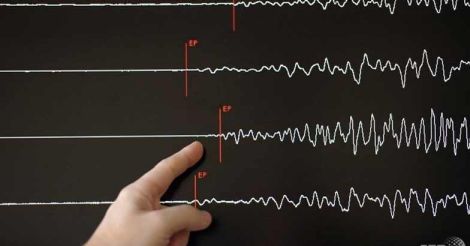If it was one atom bomb that destroyed Hiroshima, the surge of energy that shook Nepal, north India and the Himalayan mountain range the other day was equal to about 900 atom bombs.
In Richter scale, which is used to measure earthquakes, an increase by one unit corresponds to a surge in amplitude by 10 times. However, the difference in the energy released will be 30 times, ie the energy released by a quake measuring 7 on the Richter scale will be 30 times more than the energy released by a quake with a magnitude of 6. Generally, scientists compare an earthquake with a magnitude of 6 to the atom bomb that was dropped on Hiroshima. The magnitude of the Nepal quake is 7.9, which means its energy was equal to that of 900 atom bombs!
Continental boundaries and mountain ranges
Below continents and oceans lie tectonic plates. When these constantly moving plates collide, their edges bend, creating different types of mountains. All important mountain ranges are found near the boundaries of continents, the reason being the chances of tectonic plates colliding are greater in these places. When the tectonic plates that carry continents come closer, their edges press against each other and fold over, forming fold mountains. The Himalayas are such a mountain range.
The Himalayas were formed 50 million years ago when the Indian continental plate collided with the Eurasian continental plate. Even now they are moving at a speed of 5 centimetres a year, pressing against each other.
Quake-prone Himalayas
The Himalayan mountain region is always prone to earthquakes. Between 1897 and 1950, four earthquakes measuring 8 or more on the Richter scale shook the region. They were Shillong (1897), Kangra (1905), Bihar-Nepal (1934) and Assam-China (1950). Since then, quakes of such magnitude have not occurred in the region. But, on the assumption that pressure was mounting on continental plates in this region, geologists had issued many warnings. The earthquake that rocked Nepal and north India attest the conclusion that the region from Myanmar, which is the eastern border of the Indian continental plate, through the Himalayas and Pakistan to Afghanistan, which is the western border of the plate, is susceptible to earthquakes with a magnitude of 8 or more on the Richter scale.
According to the intensity of the quake, India is divided into four regions: from zone 2 to 5. Zone 2 is the safest region. Zone 5 is always prone to powerful quakes. Nepal and the Himalayas are in zone 5, while Kerala is in zone 3.
Buildings must be able to resist quakes
Most often earthquakes are unpredictable. The only solution is to resist their destructive power. A quake does not kill anyone, but tragedies occur when buildings, bridges, homes and walls collapse. This is where preventive measures become relevant. In the 2011 earthquake in Japan, which came at 9 on the Richter scale, 20,000 people died. However, in the 2010 quake in Haiti with a magnitude of 7, about 3 lakh people perished! What helped Japan were the measures it took after assessing the prospect of earthquakes.
All major buildings in states that come in zone 4 and 5 should be examined to find out whether they can survive quakes. For a start, the standards of hospitals, schools, police stations and fire stations should be ensured. Rapid visual inspection technology can be used to detect seismic vulnerability. Old buildings must be rebuilt. The next step is to make schoolchildren aware of earthquakes, precautions against them, and safety measures to be adopted at the site. Let them share this information at home.
What to do if quakes recur?
Another way is to find an answer to what should be done if quakes recur in the same place. Scientists conducted a study, assuming that the Kangra quake of 1905 recurred in February 2013 and the Shillong quake of 1897 recurred in March 2014. They measured population, its density and the standards of buildings. The Kangra quake was extrapolated to Punjab, Haryana, Himachal Pradesh and Chandigarh. The study found that, if the quake had recurred at midnight, it would have killed about a million people.
Scientists passed this shocking news to governments and officials, and suggested follow-up measures. On the basis of that, on February 13, 2013, a mega mock drill was organised. A similar study was conducted in March 2014 in eight north-eastern states, seeking answers to what would happen if the Shillong quake of 1897 recurs.
Everyone knows that one should move to an open space when a quake occurs. We spend most of the day at home, or in office, school or college. If the place you are sitting shakes when you are reading this, where will you run to? How old are those buildings? The answer to this question is the best precaution against an earthquake.
(The writer, a professor at the National Geophysical Research Institute in Hyderabad, is the president of the Geological Society of India and a member of the Atomic Energy Regulatory Board. He is one of the best earthquake analysts in the world)




































































































































































































































































































































































































































































































































































































































 A quake does not kill anyone, but tragedies occur when buildings, bridges, homes and walls collapse. Picture for representational purpose
A quake does not kill anyone, but tragedies occur when buildings, bridges, homes and walls collapse. Picture for representational purpose
Disclaimer
The comments posted here/below/in the given space are not on behalf of Manorama. The person posting the comment will be in sole ownership of its responsibility. According to the central government's IT rules, obscene or offensive statement made against a person, religion, community or nation is a punishable offense, and legal action would be taken against people who indulge in such activities.